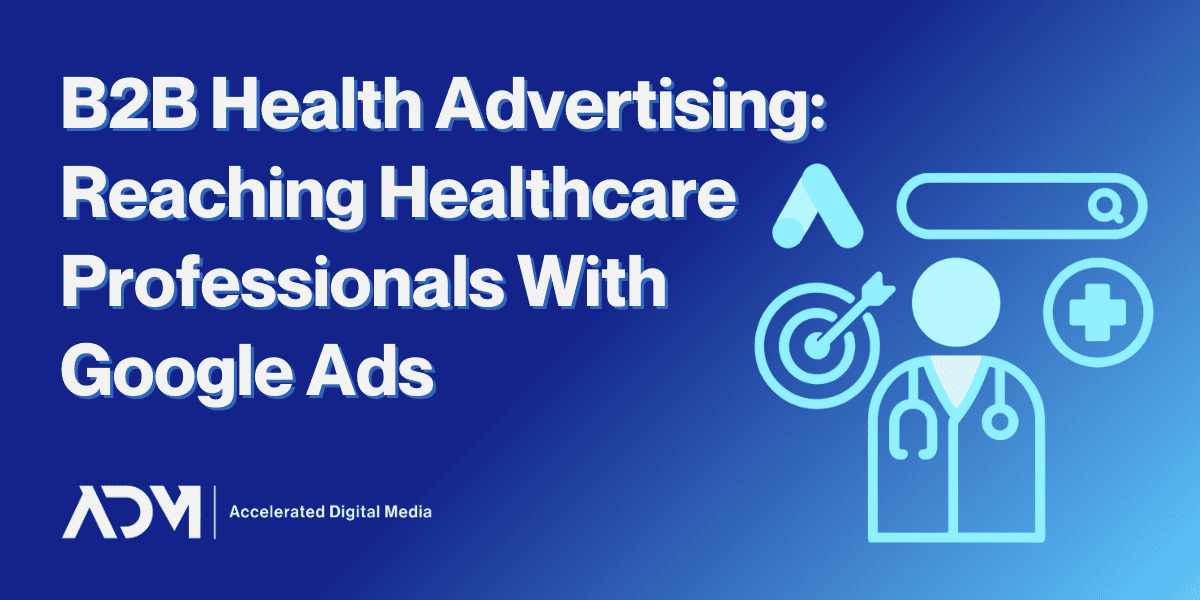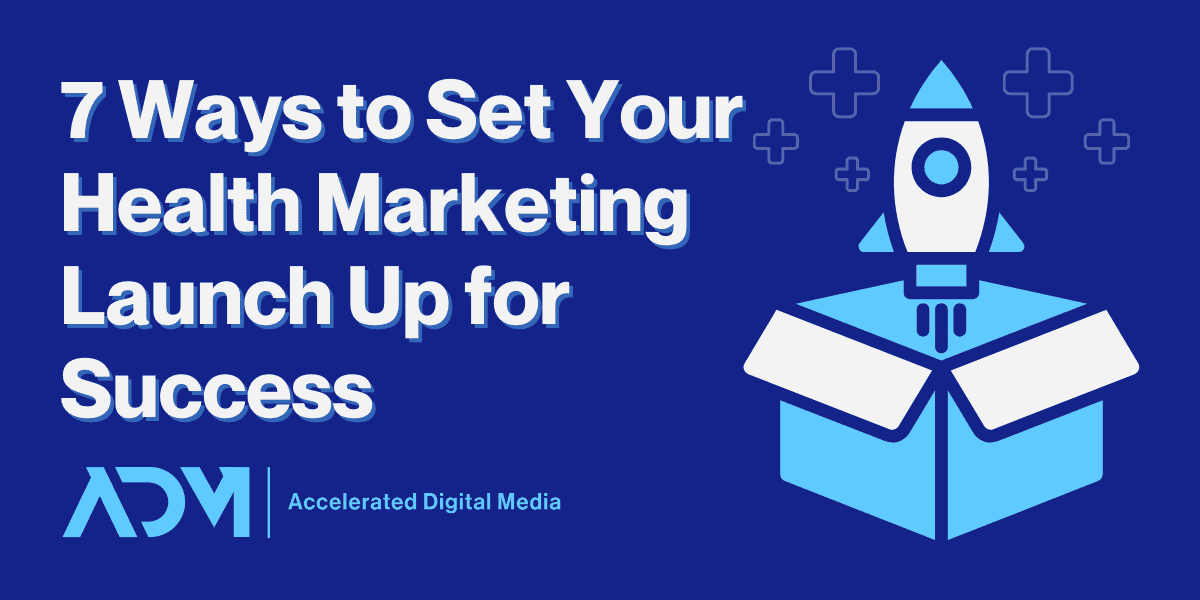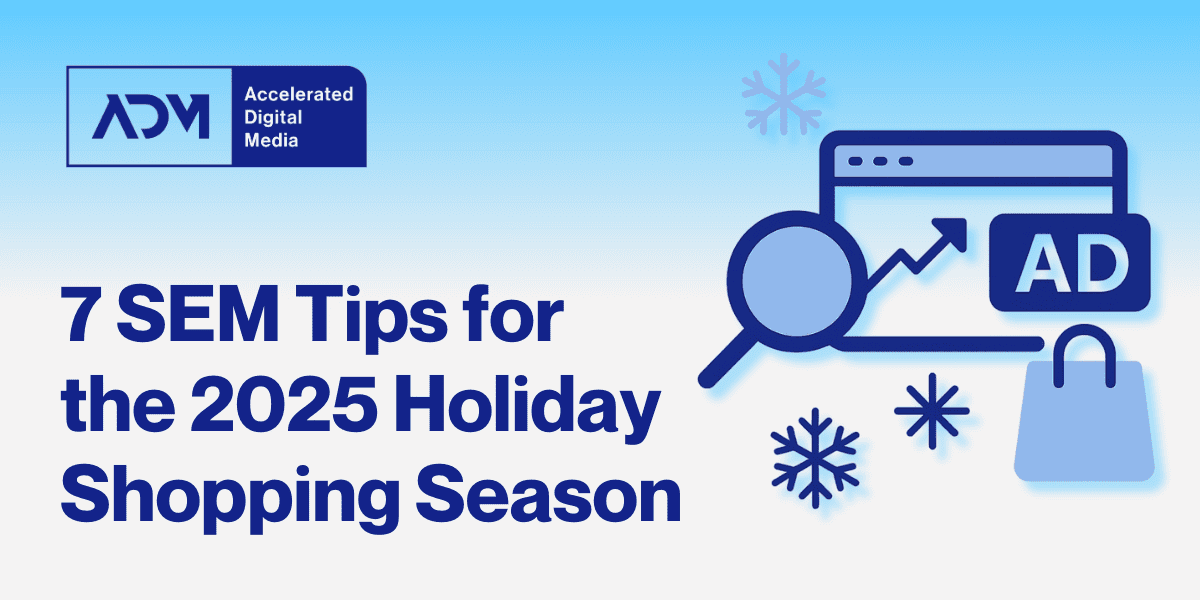A May 2025 update to Google’s personalized advertising policy marked a turning point for B2B healthcare marketers. For years, Google restricted ad personalization in health-related categories to prevent potential HIPAA violations. That made sense when campaigns were aimed at patients, but it left brands that needed to reach healthcare professionals without many options.
Now, Google has clarified that advertisers may use Customer Match and Remarketing lists to target licensed healthcare professionals in their professional capacity. For medical device makers, digital health platforms, and B2B health service providers, this restores access to one of the most effective advertising ecosystems available.
The opportunity is significant, but success depends on adapting strategies to a professional audience. Drawing from ADM’s experience building high-performing B2B health campaigns, here are the principles that matter most.
Who Benefits From This Policy Change?
The ability to reach doctors and other providers through Google Ads is not just a theoretical win. It opens real opportunities for a number of B2B health brands that depend on professional adoption:
- Medical device companies introducing implants, diagnostic tools, or imaging systems where physician awareness drives uptake.
- Pharma and biotech firms marketing therapies that require prescriber education, including those under Google’s restricted-drug categories.
- Digital health platforms offering workflow tools, AI diagnostics, or remote monitoring that slot directly into clinical practice.
- Continuing education providers promoting CME courses and credentialing programs.
- Clinical research organizations recruiting physicians for trials or survey panels.
- Practice management and B2B suppliers from lab testing services to billing platforms.
For all of these, Google Ads now offers a scalable, measurable way to get in front of the professionals who make—or influence—adoption decisions.
1. Segment and Structure Campaigns for Professionals
Patients and providers search differently. HCP campaigns should be built on keyword sets and audience lists that reflect professional intent: clinical queries, treatment-specific terms, and identifiers tied to job titles or specialties.
One of the biggest pitfalls is mixing patients and providers in the same campaign. Keeping professional campaigns in their own silos—with tailored messaging, naming conventions, and budgets—ensures clarity and prevents wasted spend. It also creates a compliance buffer by showing a clear separation between audiences with very different needs and expectations.
2. Align Creatives With Clinical Expectations
Clinicians don’t want lifestyle imagery or vague promises. They want clarity, evidence, and relevance to their daily work. Ad copy should emphasize outcomes backed by data, technical integrations, and professional value propositions. Landing pages should offer substance: case studies, workflow support, or downloadable resources.
In B2B health campaigns, formats like carousels or conversational ads have worked well because they frame the offer as a resource, not just a pitch. On Google Ads, that translates into copy that highlights things like peer-reviewed data, compatibility with EHRs, or CME opportunities. The creative should feel like professional education, not consumer advertising.
3. Navigate Compliance and Certification
Policy navigation is often the toughest part of HCP advertising. Medical terminology in ad copy or landing pages can trigger disapprovals, and advertisers promoting products on Google’s restricted-drug list face even stricter requirements.
Google now requires a certification process for any advertiser looking to personalize ads with restricted drug terms. That process involves:
- Applying for certification directly with Google.
- Providing a formal authorization letter if working through an agency partner.
- Demonstrating that all customer lists, websites, and creative comply with state, federal, and platform-level regulations.
Certification is not optional—without it, personalization is off the table. For brands that can complete the process, though, the payoff is targeted campaigns that reach exactly the right professional audiences.
4. Measure Against Professional Benchmarks
Success in HCP campaigns looks different than patient acquisition. Instead of CAC or appointment volume, more relevant indicators include:
- Cost per registration for portals or trial programs
- Engagement with professional resources like white paper downloads or CME sign-ups
- Demo or consultation requests that flow into sales pipelines
In one B2B program, ADM reduced cost per registration by more than 60 percent over six months through careful dashboarding and optimization. The lesson is simple: track the metrics that reflect professional engagement and decision-making, not just downstream patient conversions. Doing so builds trust with stakeholders and provides a foundation for continued budget growth.
5. Communicate Proactively in Complex Organizations
Healthcare companies targeting HCPs are often large, consensus-driven, and bound by internal review processes. Campaign approvals may require multiple stakeholders, including boards and legal teams. Without proactive communication, digital campaigns risk losing momentum.
Strong reporting, pacing trackers, and structured growth plans help keep initiatives moving while decisions are pending. Beyond execution, this demonstrates that digital marketing can function as a strategic growth driver rather than a tactical expense. Agility in managing complex organizations is as important as ad performance itself.
Where Google Fits in the Larger Mix
Google Ads is not the only channel for reaching healthcare professionals, but its new policy shift makes it a powerful complement to others. LinkedIn, for example, has long been a strong B2B option for career-based targeting. However, a recent policy update restricted how healthcare advertisers can use the Insights Tag for retargeting. That change makes it harder to re-engage HCPs at scale on LinkedIn alone.
Programmatic campaigns, meanwhile, can still access specialized medical publications, and conferences or CME events remain central for relationship-building. But Google Ads now fills a crucial gap: intent-driven search and scalable remarketing, made possible again by the May policy shift.
New Opportunities for B2B Health Marketing on Google
Google’s policy change restores a powerful set of tools for healthcare brands. But unlocking their full value requires campaigns that are evidence-driven, compliant, and professionally attuned. The same tactics that work for patient acquisition won’t succeed here.
At ADM, we’ve seen how the right mix of segmentation, clinical messaging, and transparent reporting can transform healthcare professional campaigns into growth engines. If you’re a B2B health brand looking to see how expert performance marketing can help you grow, don’t hesitate to reach out to our team below:




